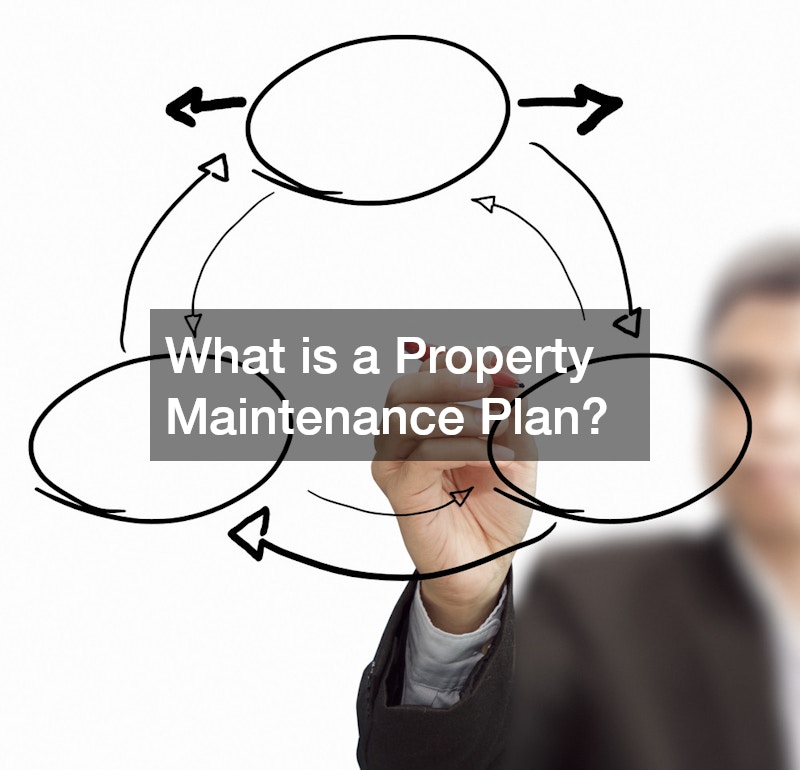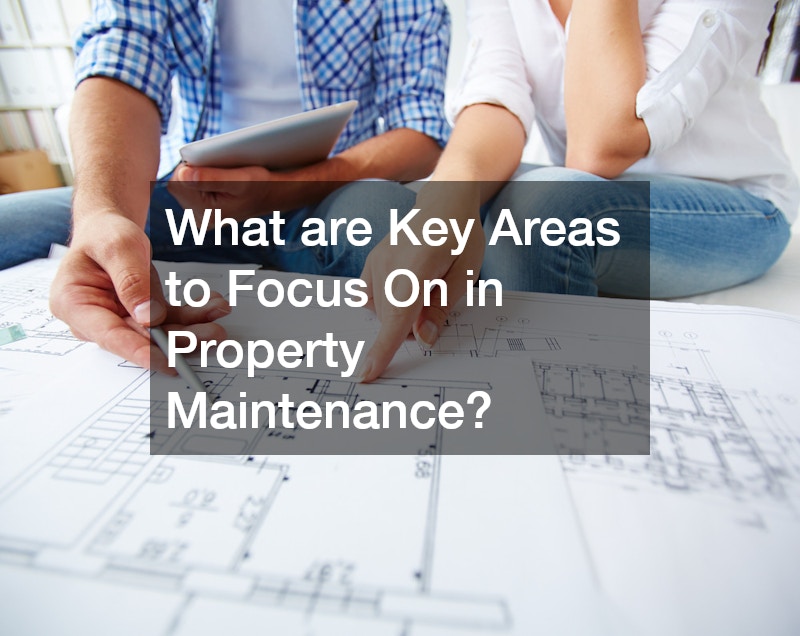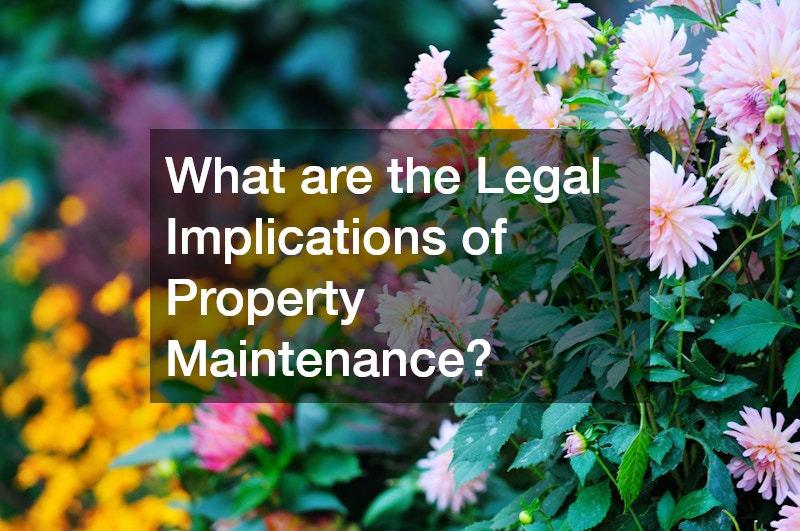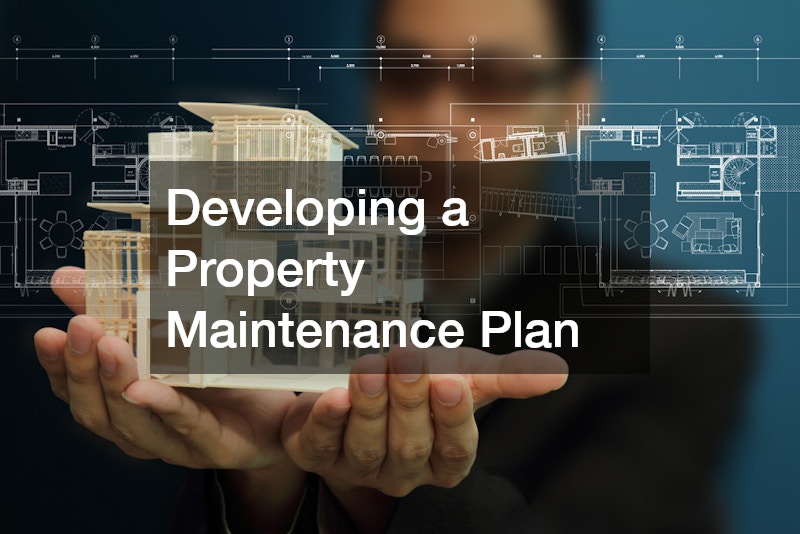Developing a comprehensive property maintenance plan is essential for preserving the value, safety, and functionality of any residential or commercial property. A strategic maintenance approach not only extends the property’s lifespan but also boosts curb appeal, reduces long-term costs, and increases tenant satisfaction. It is a proactive measure that addresses potential problems before they escalate into expensive repairs, all while supporting compliance with local regulations and industry standards. Whether you’re managing a single-family home, an apartment complex, or a commercial building, a well-executed maintenance plan ensures your investment is protected year-round.
What is a Property Maintenance Plan?

Definition and Overview
A property maintenance plan is a structured framework outlining how various elements of a property are cared for on a routine and as-needed basis. It incorporates preventive maintenance, routine checks, emergency repairs, seasonal care, and long-term improvements. The plan ensures that both the interior and exterior components of a property remain in top condition.
Purpose and Importance
The purpose of a maintenance plan is to prevent deterioration, manage operational costs, and ensure tenant comfort and safety. It creates consistency, transparency, and accountability in property care. Furthermore, it aligns maintenance tasks with the specific needs and unique features of a property, such as specialized installations or landscaping elements.
Components of a Maintenance Plan
An effective maintenance plan includes scheduled inspections, task assignments, repair protocols, budgeting strategies, and contingency measures. It should also incorporate guidelines for working with professionals such as a roofing contractor, a licensed arborist, or specialized service providers like tree trimming services.
Goals and Objectives
The core goals of a property maintenance plan are to maximize the property’s value, reduce the frequency and severity of repairs, and ensure occupant safety. Additional objectives may include improving energy efficiency, maintaining aesthetic standards, and preparing the property for seasonal changes.
Legal and Compliance Considerations
Property maintenance must adhere to local building codes, safety regulations, and health standards. For example, regular gutter cleaning and roof inspections are essential not only for functional reasons but also for code compliance in many jurisdictions. Keeping thorough documentation helps meet these requirements and reduces liability risks.
Why is Regular Maintenance Essential?
Prevention of Costly Repairs
Neglected minor issues can quickly escalate into major problems. For instance, delaying roof inspections may lead to the need for local roof replacement, which can be significantly more expensive than preventive maintenance performed by qualified roof installers.
Enhancing Property Value
Curb appeal is a major factor in property valuation. Regular upkeep of roofing, landscaping, and hardscape elements, such as ponds or pathways, contributes to a more desirable and higher-valued asset. Features like pond and lake aerators not only add aesthetic appeal but also maintain water quality, making the entire backyard design more inviting and functional.
Ensuring Tenant Satisfaction
Tenants appreciate clean, safe, and well-functioning environments. By providing reliable maintenance services, including swift repairs and professional landscaping with a skilled landscaper, property managers can significantly increase tenant retention and improve reputation through word-of-mouth referrals.
Extending Property Lifespan
Routine inspections of the building’s foundation, roof, plumbing, and electrical systems ensure the property lasts for decades. Services like tree trimming can prevent root intrusion and damage to nearby structures, while regular roofing checks reduce wear caused by weather exposure.
Safety and Risk Management
Poorly maintained properties pose safety hazards such as leaks, structural instability, and overgrown trees. Tree services provided by certified arborists reduce the risk of falling branches and storm-related damage, contributing to a safer environment for tenants and visitors alike.
How to Create a Tailored Maintenance Plan?
Assessing Property Needs
Begin with a thorough evaluation of your property’s condition. Take note of unique features, such as a backyard pond that may require pond and lake aerators, or a heavily treed lot that may demand ongoing tree trimming services. This step ensures that all maintenance requirements are accounted for from the start.
Prioritizing Maintenance Tasks
Rank tasks based on urgency, safety, cost implications, and seasonal relevance. For instance, roof maintenance should be prioritized before winter months, especially in regions prone to heavy snowfall. Addressing gutter issues or hiring a roofing contractor in advance can prevent ice dams and water damage.
Setting a Budget
An accurate maintenance budget must account for both routine and emergency expenses. Set aside funds for recurring services such as landscaping and gutter maintenance, as well as larger capital projects like local roof replacement or installing new pond and lake aerators.
Scheduling and Timing
Create a detailed timeline that reflects the frequency of necessary maintenance activities. Seasonal considerations are critical, especially for tree services in the fall and winter or for roof inspections before the rainy season. Collaborate with roof installers or a landscaper to ensure timely execution of specialized tasks.
Documenting and Reviewing the Plan
Every service performed, from minor repairs to tree trimming, should be documented. Periodic reviews of the maintenance plan help identify gaps and allow for updates based on property wear, tenant feedback, or newly added features such as a redesigned backyard.
What are Key Areas to Focus On in Property Maintenance?

Structural Integrity
Regularly inspect the foundation, walls, windows, and roofing systems. Engage a certified roofing contractor to evaluate roof condition and recommend repairs or replacement as necessary. A compromised roof can lead to leaks, mold, and significant interior damage.
Plumbing Systems
Ensure all pipes, fixtures, and drainage systems function properly. Periodic inspections help detect leaks or blockages early. Properties with outdoor water features may require attention to plumbing connected to pond and lake aerators.
Electrical Systems
Test circuit breakers, outlets, and lighting systems regularly. Electrical faults pose fire hazards and may violate safety regulations. Hiring qualified electricians for inspections and maintenance helps avoid costly outages and ensures code compliance.
Exterior and Landscaping
The exterior includes everything from the building façade to fences and pathways. Landscaping is a major part of maintenance, especially if your property features intricate backyard design elements. A skilled landscaper ensures that lawns are mowed, flower beds are healthy, and trees are safely pruned through professional tree services or arborist consultations.
Interiors and Amenities
Keep communal areas clean and well-lit. Inspect HVAC systems, elevators, and appliances regularly. Ensure that everything from flooring to windows meets safety standards and adds comfort for occupants.
Who Should Be Responsible for Maintenance?
Roles of Property Managers
Property managers oversee the maintenance plan, coordinate service providers, and ensure that all scheduled tasks are completed. Their leadership is crucial for budget management, tenant communication, and contractor supervision.
In-House Maintenance Teams
Larger properties benefit from in-house teams that can address day-to-day issues promptly. These teams handle tasks like minor plumbing repairs or basic landscaping, while coordinating with specialized contractors when needed.
Hiring Professional Contractors
Specialized tasks such as local roof replacement, complex electrical repairs, or large-scale landscaping should be handled by licensed professionals. Reputable roof installers and certified arborists bring the expertise needed to perform safe, high-quality work.
Tenant Responsibilities
Tenants are often responsible for reporting maintenance issues and performing basic upkeep such as replacing light bulbs or keeping patios clean. Lease agreements should clearly outline these responsibilities to prevent misunderstandings.
Outsourcing and Subcontracting
Many property managers choose to outsource services like lawn care, tree trimming, or even pond aerator maintenance. Outsourcing allows access to expert tools and knowledge without the cost of maintaining a large in-house team.
How Often Should Maintenance Tasks Be Performed?
Routine Maintenance Schedule
Daily and weekly responsibilities include cleaning, monitoring lighting, and checking HVAC systems. Seasonal services like gutter cleaning or tree trimming should be scheduled ahead of inclement weather.
Seasonal and Annual Tasks
Spring and fall are ideal for landscaping, aerator maintenance, and exterior painting. Annual inspections by a roofing contractor can identify early signs of deterioration, while a landscaper can rejuvenate your backyard design before peak season.
Emergency Repairs
Emergencies like burst pipes or roof leaks require immediate action. Partnering with responsive contractors, including roof installers or tree services, ensures fast mitigation of damage and restoration of property functionality.
Inspections and Assessments
Schedule bi-annual inspections of major systems. If your property features large trees, an arborist should evaluate their health annually to prevent collapse or disease. Electrical, plumbing, and structural systems should also be assessed at least once a year.
Updating and Revising Schedules
Your maintenance plan should evolve with the property. For example, after a backyard redesign, new landscaping or water features may require different scheduling for upkeep or new service providers, such as those specializing in pond and lake aerators.
What Tools and Software Can Help with Maintenance?

Property Management Software
Software platforms centralize all maintenance-related information, from task assignments to vendor communications. These tools can automate reminders for inspections, schedule services with roofing contractors, and store tenant maintenance requests.
Maintenance Tracking Apps
Mobile apps enable real-time tracking of repair tasks and contractor performance. They also allow staff to upload images of completed work, making documentation seamless and efficient.
Inventory and Asset Management
Managing tools, spare parts, and supplies ensures that your team is never short of essentials. Keep tabs on equipment like aerators, power tools, and safety gear to avoid downtime.
Digital Inspection Checklists
Checklists help standardize property inspections and ensure compliance. They are especially helpful when dealing with complex systems like electrical panels or tree care.
Automated Scheduling Solutions
Tools that automate scheduling help maintain consistency. Regular alerts ensure that tasks such as gutter cleaning or roof inspections aren’t overlooked, reducing the risk of emergencies.
What Costs Are Involved in Property Maintenance?
Budgeting for Maintenance
Your budget should reflect the frequency of services and potential for emergencies. Costs for roofing contractors, tree trimming services, and landscaping projects must be anticipated and factored in accordingly.
Cost vs. Investment Analysis
Think of maintenance as an investment. While services like local roof replacement or hiring an arborist may seem costly up front, they significantly extend your property’s longevity and enhance market value.
Determining Labor Costs
Labor costs vary based on the complexity of the task and the skill level required. A certified arborist or specialized roof installer may command higher fees, but their work minimizes long-term risks.
Material and Equipment Expenses
From shingles and sealants for roofs to pumps for pond aerators, material costs can add up. Choosing quality products helps reduce frequent replacements and ensures safety.
Savings through Preventative Maintenance
Preventative care always costs less than reactive repairs. Regular tree services, gutter maintenance, and roofing inspections catch problems early, reducing the likelihood of emergencies and helping to avoid tenant dissatisfaction.
How to Handle Maintenance Emergencies?
Developing an Emergency Plan
Your emergency plan should define responsibilities, contain contact information for key vendors, and establish protocols for common scenarios such as flooding, power outages, or storm damage from falling trees.
Emergency Contacts and Resources
Maintain a list of trusted professionals including roofing contractors, electricians, plumbers, tree services, and landscapers. Quick access to these contacts ensures fast recovery during a crisis.
Communication Protocols
Establish clear methods for notifying tenants during emergencies. Whether by text, phone, or email, communication should be fast and informative, with updates provided as situations evolve.
Assessing and Mitigating Damage
After stabilizing the situation, document the damage thoroughly. Consult with experts like arborists or roof installers to evaluate the scope of repair and prevent recurrence.
Post-Emergency Evaluation
Every emergency should lead to a process review. Update your maintenance plan, vendor list, and budgeting strategy accordingly to be better prepared for future incidents.
What are the Legal Implications of Property Maintenance?

Understanding Local Laws and Codes
Ensure compliance with building regulations, especially regarding roofing, tree management, and outdoor structures. Non-compliance can lead to fines, liability claims, or forced repairs.
Health and Safety Regulations
Maintaining clean, dry, and hazard-free environments is a legal obligation. Regular inspections, pest control, and services like tree trimming all contribute to safer premises.
Tenant Rights and Responsibilities
Tenants are entitled to habitable and safe living conditions. Failure to maintain the property adequately could lead to legal disputes or rent withholdings.
Insurance and Liability Issues
Insurance policies often require proof of regular maintenance. Services from licensed professionals like a roofing contractor or arborist help demonstrate due diligence and reduce liability exposure.
Compliance and Documentation
Keep thorough records of all maintenance activities, including contractor invoices and inspection reports. These documents are crucial for audits, insurance claims, and legal defenses.
A comprehensive property maintenance plan is the backbone of effective property management. It safeguards the physical integrity of buildings, ensures tenant comfort, and promotes long-term financial sustainability. By focusing on essential tasks, leveraging expert services—from roof installers and landscapers to tree trimming and pond aerator specialists—and using digital tools for tracking, property owners can create a living or working environment that thrives. Proactive maintenance is more than a best practice—it’s a strategic advantage.
